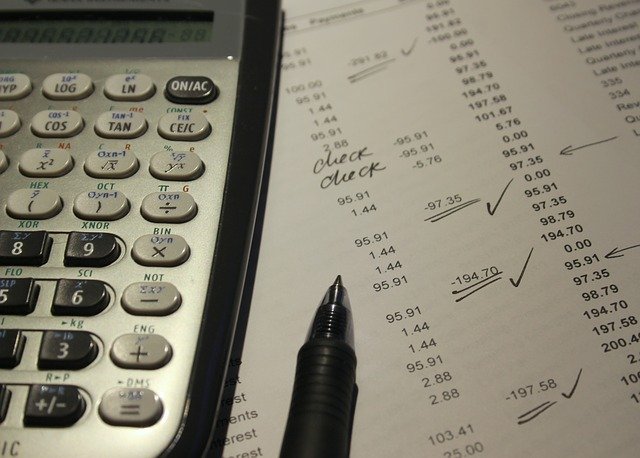Housing Market Forecast
13 July, 2022
13 July, 2022

At APC we've heard quite a few questions and musings about the future lately. Is there a recession coming? Should I invest or save? Emily Howard sat down with Danushka Nanayakkara Skillington, AVP of Forecasting & Analysis for the NAHB to discuss the most recent housing market trends, efforts in Washington and their best advice for contractors as we look to the future.
Emily: So Danushka, we last spoke in 2020, and COVID was just ramping up, much of the country was shut down, and we had no idea what the future might hold. Can we look back for a second at what did happen and then how things are shaping up now?
Danushka: So, on the construction side, for single-family homes, when I think you and I last spoke in 2020, we were wondering, how bad is 2020 going to be? But 2020 was remarkable because it showed how important housing was to a lot of people. When the pandemic happened, everybody was just racing to buy houses. People realized they needed space. And then of course the outdoor spaces were the prized possession. So, the year for single-family homes ended 13% higher compared to the year before.
For single-family starts last year, 2021, again, another 13% increase. It's been really strong. Unfortunately, 2022 is shaping up to be a different situation at this point, given the tightening monetary policy. The Fed is aggressive right now. We have put in a recession in the forecast for next year. A mild recession and then slow recovery into 2024. So given that context, this year we are expecting single-family home starts to decline by 13% and for next year a 5% decline.
Emily: What do you think that's going mean for painting business owners?
Danushka: How I look at it is even though we're expecting declines in 2022 and 2023, single-family starts as still solid. 2020 and 2021 were unusually strong years for single-family given unprecedented demand for housing. And even if single-family starts are declining, we are expecting the remodeling market to remain strong. Remodeling is one of the bright spots because even if you want to move, it's really hard. It's really competitive to buy a house right now. So, people are just going stay where they are and remodel. We are expecting the remodeling market to have 9% growth this year compared to last year and 6% growth next year. The multifamily market is also strong. It's just a single-family that we are seeing declines, but multifamily and remodeling strong.
Emily: One bit of data that we’ve seen is that the home builder sentiment has fallen to a “two-year low,” but correct me if I'm wrong, that two-year low is coming from like a 30-year high wasn’t it?
Danushka: Yeah, it's still positive. If you look at the benchmark index, above 50 means it's positive and below 50 is negative. It’s at 67 right now. The peak was in November 2020 and it's still strong, but what's concerning us is the fact that the traffic is slowing down. The index has different components that it’s based on, and buyer traffic is one of the indicators. We are seeing that the buyer traffic is slowing down, and that's a direct response to the interest rate hike.
Emily: We talked a bit about the wild race to buy houses during the pandemic, and there has been so much discussion about how that has caused an increase along with labor and material shortages. I read recently that NAHB was in Washington to discuss the affordability of housing. Talk a little bit about what NAHB is doing in Washington and what people should know about those discussions.
Danushka: We've been lobbying the administration that the housing market needs relief. We need the building material prices to come down; building material prices are up 19% year over year. We also need help with the labor shortage. There are 449,000 open jobs in construction, and that's a number we've never seen in the construction space.
The White House did introduce a few things, but I'm not sure how long they will take. These are things to encourage manufactured housing, introducing financing options for builders, and then of course build affordable price housing as well. They're planning to help renters who are struggling with the high rental costs. But, again, there's no real timeframe of when this plan will go into action.
We really need to be thinking about how we expand supply. That's the biggest way we can bring the prices down. How do we build more middle housing like the townhouses, duplexes – the small construction that's built for density. How do we allow for more accessory dwelling units? This can add options so that your aging parents can live with you, or your adult children can live with you, or you can rent it out. And then we should probably expand manufactured housing. These are easy to say, but doing it is challenging because the construction takes longer now, and it's costing more.
Emily: And, touching on supply chain, I read recently that lumber prices have seen a decline. I'm sure that that's minuscule in comparison to how much it's risen in the last few years. What's the forecast? Is there any forecast for building materials prices?
Danushka: We do forecast the producer price index (PPI). We do expect this year to be still high, around 10% by the end of the second quarter. That's still really high, but the lumber prices are falling a bit. But you know, lumber is one thing. There is still aluminum, copper, gypsum, drywall, ready-to-mix concrete. All of these components need to come down as well to help with the costs.
Emily: What would you say the painting business owners should be focused on right now? It's an impossible question, but should they continue to focus on building their labor or hunkering down and saving cash for the future?
Danushka: I look at it this is the way: If I'm a homeowner right now, I see inflation is high, right? You're paying so much more for food, shelter, gas and all that stuff. If you're eating into your savings, you're going to hold off on doing remodeling. But if the Fed is successful in taming down inflation pretty quickly by the end of this year, or even beginning of next year, we could see that it would be just a mild recession, and we could see recovery in 2023. That means that people will again have savings. Then one of the first things people will do, especially if you're a new homebuyer, you are going to spend the money to paint the house and do some remodeling.
So, I would say be cautious. Be aware that the next year or so is going to be a little bit bumpy because the Fed is going to tighten. But we are confident that the longer people are staying in their home, the fact that there's an aging housing stock, and the fact that homeowners are aging in place, that means they will spend the money to paint their houses and actually make it look nice and livable and enjoy the space. I think it's just going to be a little bit rough in the next 12 to 18 months because of this economic turmoil. But after that, 2024, I think we should be back on track again.




Add new comment